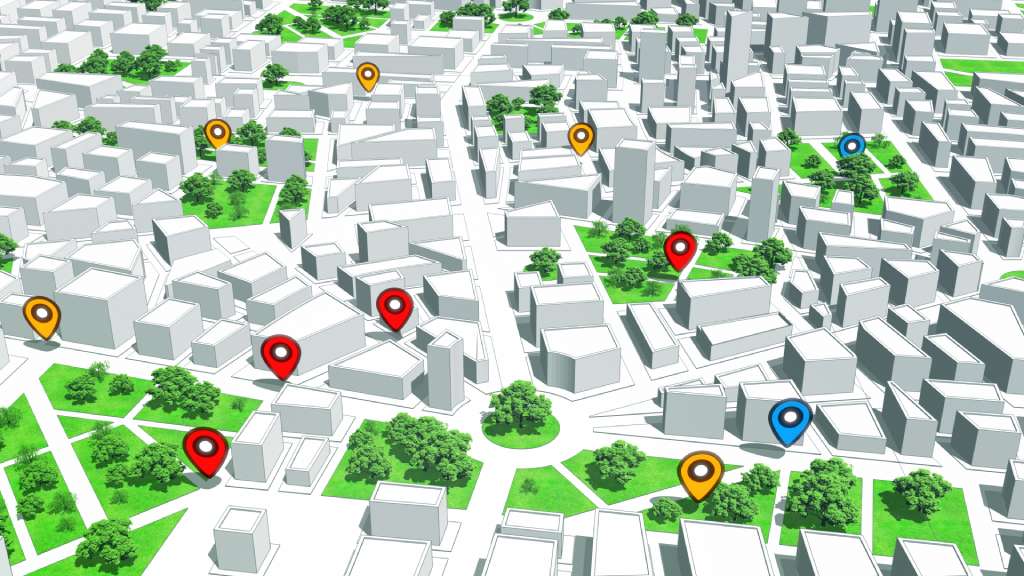
In marketing, as in much of language, synonyms can be overused to the point of words losing all meaning. And in a buzzword-heavy industry like marketing, this risks confusing two similar, but inherently unique strategies.
A solid example of this effect is how our industry has come to use “geotargeting” and “geofencing” interchangeably. But the two concepts, while conceptually similar, do feature a number of nuances that separate them.
In this article, we’ll help you understand the similarities and differences between geofencing and geotargeting. This will include pros and cons for geo fencing vs geo targeting. In the end, you should be able to determine which marketing strategy is most aligned with your business goals.
The Core Concept: Location-Based Advertising
Whether discussing geo fencing vs geo targeting, both concepts have to do with leveraging audience location insights. The goal here is to drive better marketing and sales results. A “see what sticks” approach might work for some businesses. But geotargeted media tends to see higher engagement with audiences than non-targeted media.
All of this piggybacks on the plentiful data that is gleaned by social media companies, search companies, and more. Each stores reams of data about individual user location patterns. Much of that data can be used to help drive a more focused and directed marketing push toward your prospective customers.
The one key differentiator, however, is specifically what effect geo targeting vs geofencing has on your audience base. As Indeed puts it, “geofencing results in a larger target audience, while geotargeting results in a smaller target audience.” Essentially, it is the difference between customizing your marketing content per a user’s habits versus their persona.
But what does that mean for your business? Essentially, it means tying your customers’ experience with your brand to dedicated, specific locations in our world. Many customers do their brand engagement online as they conduct their day-to-day activities and errands. By tying your marketing promotions to frequented locations, you can potentially increase the likelihood of a sale for your audience.

Geotargeting Pros and Cons
At its core, geotargeting is all about brand awareness. The more times your brand is presented to your target audience, the more likely they are to engage with it.
As such, persona insights are a heavy factor in this strategy, when you compare geotargeting vs geofencing. The more detail you can gather from tech companies about a user’s interests, home and work locations, behaviors, and more, the more personalized your ads to them can be. And the more personalized, the better for your potential ROI.
As an example, imagine a network of franchised consumer goods stores that operate in just a collection of U.S. states. While the company could turn on a general advertising campaign that targets audiences nationwide, this wouldn’t yield strong results. A geotargeted campaign would focus on serving content just to the states in which the business operates. With this level of focus, the business can be confident that their ads are being served to relevant audiences.
However, it’s not all plusses in geotargeting’s column. As a rule, user data isn’t stored in geotargeting campaigns, so your audience insights will be flash in a pan. It’s also entirely reliant on user data like IP addresses. This means audiences who have enabled privacy or anti tracking features in their mobile devices are unlikely to see your content.
Geofencing Pros and Cons
As an inverse, geofencing (vs geo targeting) is all about building an inclusive marketing strategy. A geofencing campaign is built on the notion that conceivably anyone could be a potential customer. With strict geographic radius settings, any user who crosses that threshold is worthy of your digital marketing content.
One of the best reasons why this methodology works is entirely reliant on the content that is served. Sure, if you serve a general awareness campaign, it will be seen. But imagine an example of a local restaurant running a location-based campaign.
Consider a geofencing campaign that serves a 5% off coupon between the hours of 10am and 2pm. By targeting anyone within a 10-minute walk of the restaurant, the location based marketing content is not only audience-centric. It also allows for immediate action on the audience’s part. They can’t simply opt to come back because they are signaled that the offer is fleeting.
In the downside column for geofencing, there are numerous considerations:
- They require more manual effort to set up, as geographic location details aren’t as broad as city or state.
- They are not only served to qualified leads, meaning your ad spend might be higher than expected.
- More marketing content is needed for these campaigns, since they tend to be time-and-place specific.
- They collect and store user location data. This could potentially put some businesses at legal risk in case of a data breach.
The good news is lots of businesses and agencies use geofencing tactics. All in all, it is by no means a fringe concept.
Find a Geofencing and Geotargeting Partner
Regardless of whether geofencing vs geotargeting is the right strategy for you, your marketing campaign rollout is key. It’s imperative to find a partner who can deliver your geofencing and geo targeting content effectively. AllOver Media has partnered with countless clients to drive location-based OOH results.
Looking for some help with geofence advertising? See how AllOver Media can help!
